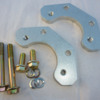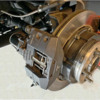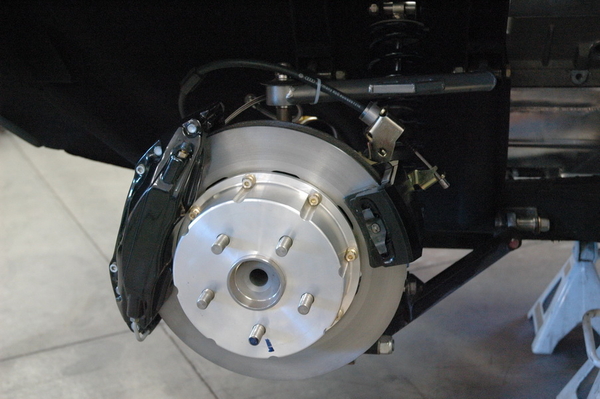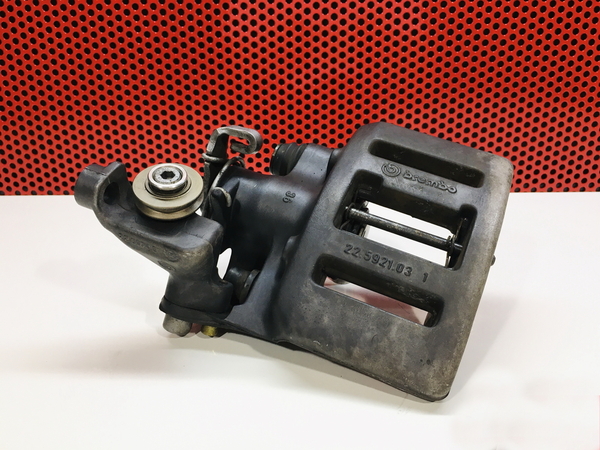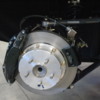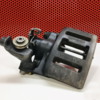I am wondering if anyone has experience with mounting a parking brake kit on the front 'ears' of the rear axel carrier. I have been in contact with Scott at Sacc Restorations and he says that the usual situation is that people use the stock parking brake on the stock calipers in the stock position, when adding big caliper upgrades (which get mounted on the front ears), or they mount a park brake kit on the rear ears and a big caliper upgrade on the front ears. He hadn't heard of people keeping stock rear calipers for normal braking, and mounting a park brake kit on the front ears. It seems logical to me, to solve the problem of a very weak stock parking brake, but I am wondering if anyone has done it and if they have experienced any problems, especially with clearance to the axel carrier, drive shafts, suspension etc, and positioning of the cable.
After years of fiddling with my stock parking brake, I am utterly convinced that it is absolutely correctly adjusted and working correctly (although I have not dismantled the pistons and looked to see if the ratchet inside is worn). But it is very very weak and apart from making me anxious everytime I need to park near a hill, I don't think it is up to scratch for the upcoming vehicle inspection. Therefore my thought to put a parkbrake kit on the front 'ears'.
Cheers, Tim.




